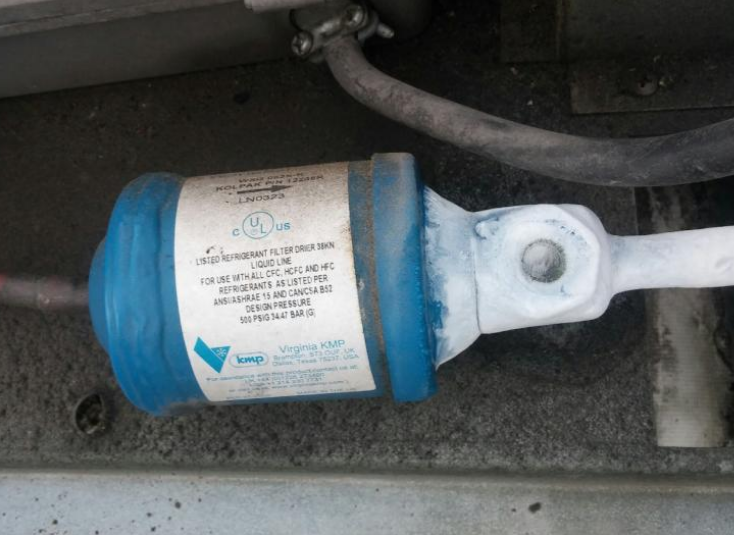Typical Refrigerant Restrictions

Refrigerant circuit restrictions can be common things like a plugged filter drier or a restricted metering device. When an un-designed restriction occurs, refrigerant will “back up” against the restriction, resulting in more refrigerant being present before the restriction and less afterwards than designed.
Scope of Work
- Recover and dispose of the existing refrigerant and liquid line filter drier as per EPA regulations (40 CFR Part 82, Subpart F) under Section 608 of the Clean Air Act at restricted refrigerant circuit(s).
- Remove the existing metering system(s) for cleaning and reinstallation.
- Furnish and install (1) Sporlan or equivalent brand OEM style liquid line filter drier(s).
- Pressure test all newly soldered copper connections with dry nitrogen to 250psi to ensure leak-free operation prior to evacuation.
- Evacuate system to 500 microns per ASHRAE/ EPA requirements.
- Recharge system to the specified weight listed by the nomenclature on the unit data tag; Top off refrigerant as necessary.
- NOTE: If refrigerant system in unable to be properly cleaned and put back into service efficiently, a quote for replacement or further repairs will be necessary.
Potential for Additional Work
- Once we are able to clear the restriction in the liquid line filter drier and fully test the unit, we test further.
- We allow the unit to operate long enough to obtain operational pressures and compressor amperage which is part of the normal testing sequence.
- If the system is noted to have a secondary restriction upstream of the failed / restricted liquid line filter drier we’ll have to address that additionally due to the nature of secondary restrictions being upstream from the primary restrictions.
- If additional issues are found, we create another quote or will seek authorization to proceed with additional unforeseeable repairs.
- This is a non-typical issue, but it does occur from time to time.
This article has been shared by Direct Service, Construction and Design to specifically accommodate our intended clientele. The intent of sharing this information is to better inform the public of these general topics, expand knowledge and safety for all and provide crucial information in regard to their MEP and building systems and/or assets. It is NOT our recommendation that any article recommendations or how-to scenarios be attempted by anyone other than a qualified or competent person.
